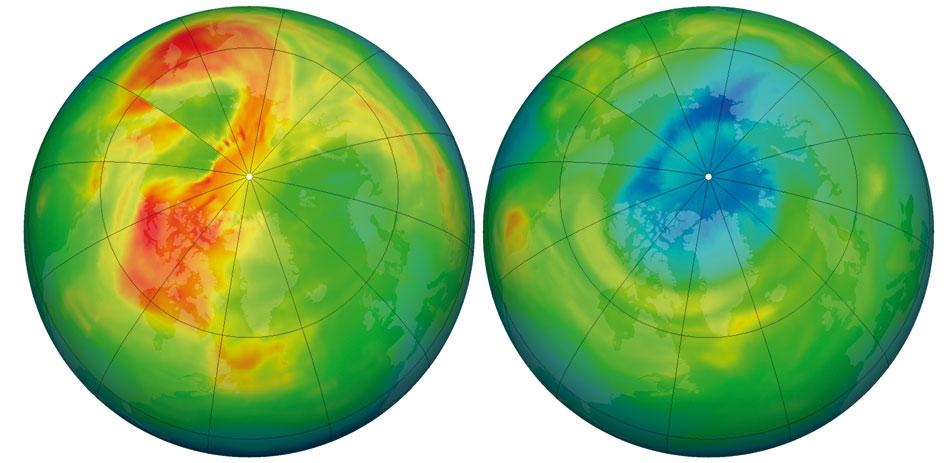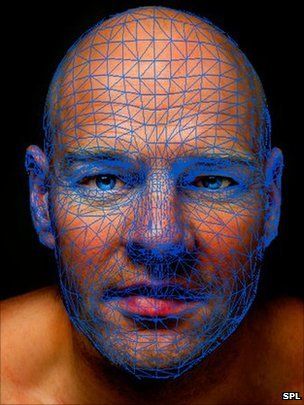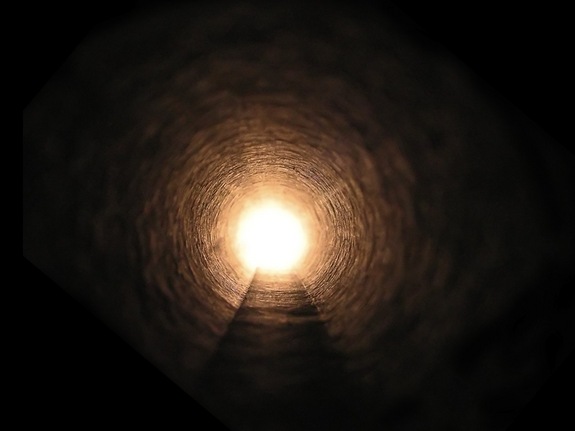
© R. Simmon / NASAArctic ozone levels hit a record low this year (blue area, right), compared with a relative high (red) in 2010.
A key source of information about the health of the ozone layer above the Arctic looks set to be choked off.
In a year that saw the first genuine 'ozone hole' appear in the Northern Hemisphere, atmospheric scientists say they are shocked to learn that Environment Canada, the country's environment agency, has decided to drastically reduce its ozone science and monitoring programme.
Its network of monitoring stations provides about one-third of the Arctic's ozone measurements and this year contributed key data showing unprecedented depletion of stratospheric ozone over the Arctic. With regular in situ measurements going back to 1966, Canada also holds the longest-running record of atmospheric ozone levels in the world - an archive that is also threatened.
The Canadian observation network comprises 17 stations - from London, Ontario, in the south to Alert in the high Arctic - which use several techniques to measure ozone (see
'The ozone network'). But atmospheric scientists and research institutes around the world, including Canada, Britain, Switzerland and Germany, have been told, informally, that the network will be shut down as early as this coming winter. This will be the end of in situ ozone measurements, including those made by balloons launched at least once a week from 11 of the stations. "This is devastating for the whole field," says Tom Duck, who conducts atmospheric research at Dalhousie University in Halifax, Nova Scotia.












Comment: As effective as this 'emotion detector' may turn out to be, there is one group that will continue to spread lies without fear of detection.